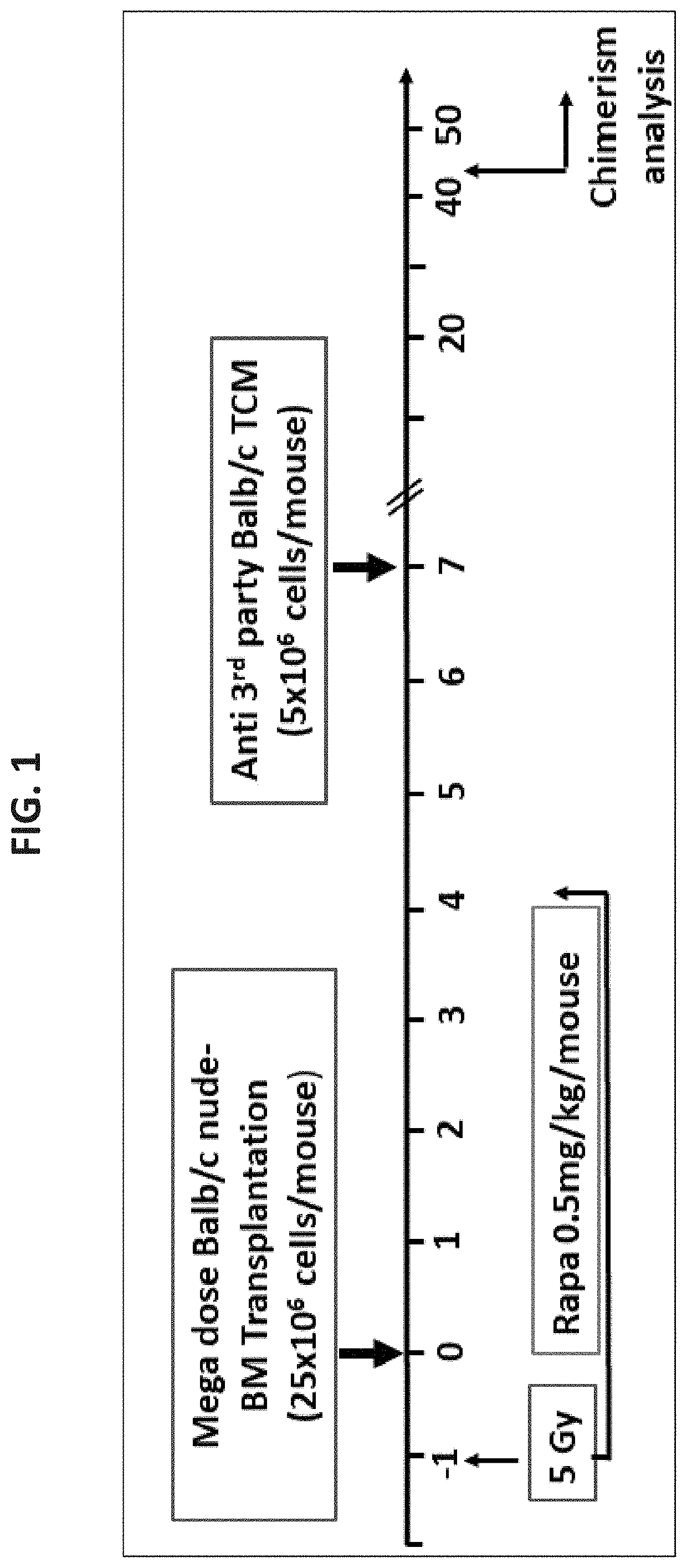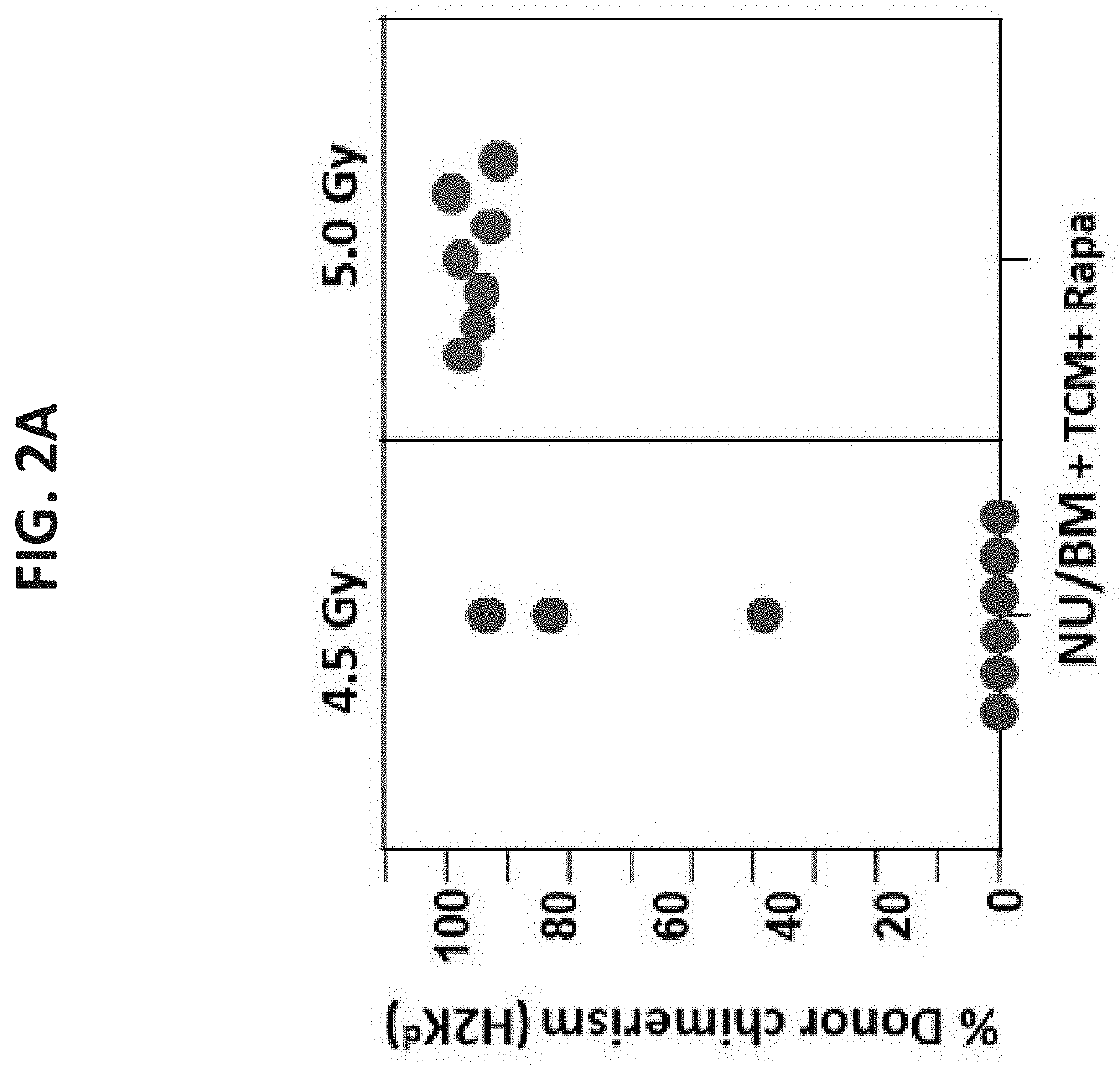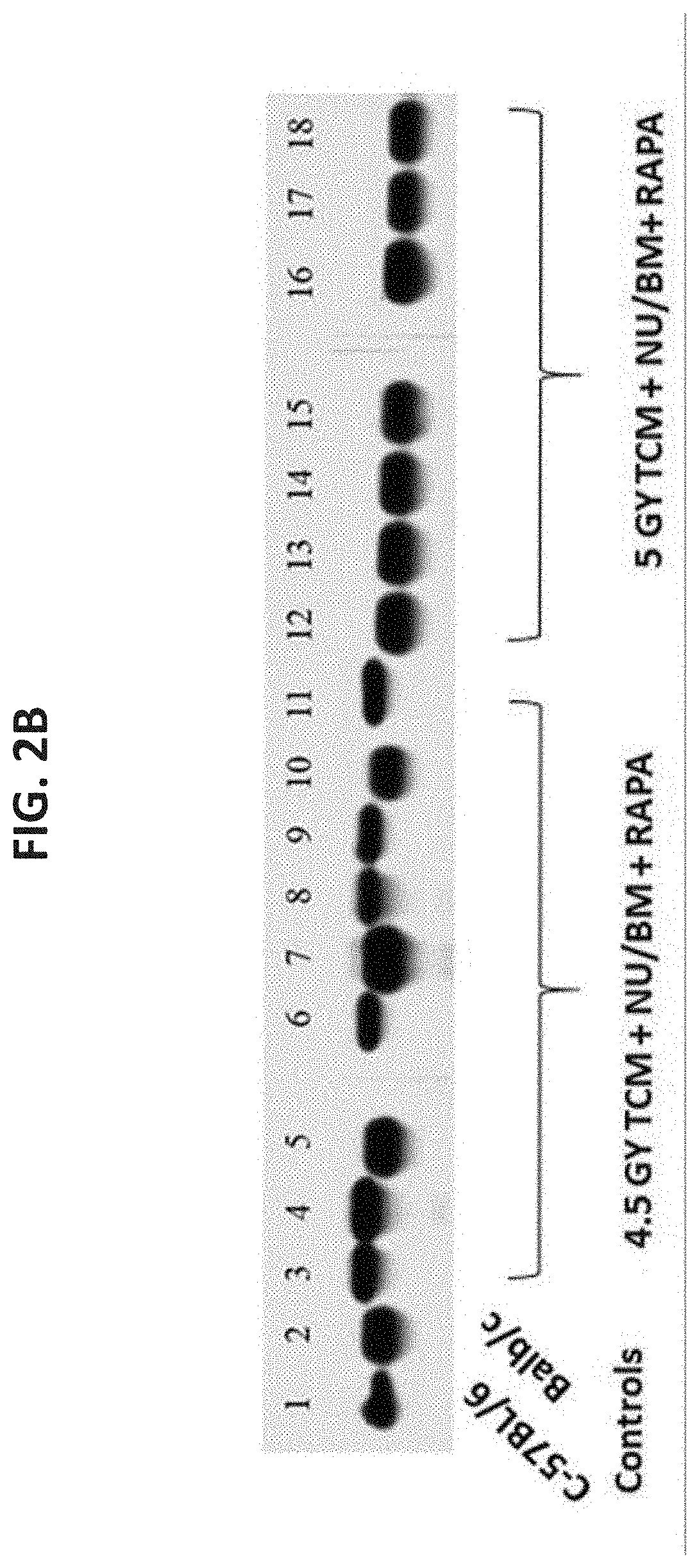Use of veto cells for the treatment of sickle cell disease
a technology of sickle cell disease and veto cells, which is applied in the direction of immunological disorders, extracellular fluid disorders, antibody medical ingredients, etc., can solve the problems of pronounced mortality and morbidity, hsct is associated with several limitations, and organ dysfunctions
- Summary
- Abstract
- Description
- Claims
- Application Information
AI Technical Summary
Benefits of technology
Problems solved by technology
Method used
Image
Examples
example 1
Treatment of Sickle Cell Disease Using Veto Tcm Cells and Bone Marrow Transplant Following a Reduced Intensity Conditioning
[0513]To generate Tcm veto cells, splenocytes obtained from Balb / c donors (H-2d) were cultured against irradiated third-party splenocytes (FVB; H-2q) under cytokine deprivation. The selective expansion of CD8 mouse T cells against 3rd party stimulators led to selective ‘death by neglect’ of bystander anti-host T cell clones potentially mediating GVHD, and these were further diluted out by subsequent expansion of anti-3rd party T clones during continued culture in the presence of IL-15. Apart from selective loss of GVH reactive T cells, these culture conditions induced a central memory phenotype shown to be important for attaining robust veto activity in vivo [Ophir et al., Blood (2013) 121(7): 1220-8].
[0514]In initial studies, the optimal irradiation dose for sickle mice (Berkeley model, H-2b) was first calibrated comparing 4.5 Gy versus 5 Gy TBI in a conditioni...
example 2
Chimerism Induction in Sickle-Cell Disease (SCD) Mice Using Megadose T Cell Depleted Allogenic BM, Veto Cells and Short Term Rapamycin Following Conditioning with Sublethal TBI
[0516]As stated above, previous studies demonstrated that a combination of mega dose TCD allo-BM, veto CD8+ T cells, and short-term post-transplant treatment with a low dose of rapamycin, could successfully induce chimerism in fully mis-matched Balb / c recipients conditioned with sublethal 4.5 GY TBI [Ophir et al., Blood (2013) supra]. Considering that the SCD mouse model (Berkeley model, H-2Kb) is based on the genetic background of C57BL / 6 mice, known to be more resistant to TBI, it was initially attempted to define the optimal dose of TBI in SCD recipients. As shown schematically in FIG. 4A, conditioning with 4.5 Gy TBI and 5 Gy TBI were compared prior to transplantation (on day −1) of megadose T cell depleted Balb / c nude bone marrow (Nu / BM) cells (H-2Kd; 25×106) in conjunction with 5×106 anti-3rd party veto ...
example 3
Normalization of Pathological Parameters in Chimeric Mice
[0520]To evaluate the extent of sickle disease correction by the induction of donor-derived hematopoietic chimerism, blood parameters of chimeric mice (n=8) were initially compared to sickle mice (n=14). As shown in Table 1 (below), none of the 14 mice transplanted in two independent experiments, exhibited transplant-related mortality during the first 4 months post-transplant. Two mice died of ocular bleeding for chimerism analysis on day 215 and day 231, respectively, and one mouse rejected the graft. Ten of the 11 available mice exhibited full conversion to normal hemoglobin as measured by electrophoresis beyond day 300 post-transplant, and one mouse exhibited mixed hemoglobin chimerism (Table 1 below, and FIG. 7A). The chimeric mice also exhibited significant normalization of all relevant hematological parameters, including circulating reticulocytes (FIGS. 7B-C), WBC counts (FIG. 7D), hemoglobin (FIG. 7E), hematocrit (FIG. ...
PUM
| Property | Measurement | Unit |
|---|---|---|
| weight | aaaaa | aaaaa |
| weight | aaaaa | aaaaa |
| weight | aaaaa | aaaaa |
Abstract
Description
Claims
Application Information
 Login to View More
Login to View More - R&D
- Intellectual Property
- Life Sciences
- Materials
- Tech Scout
- Unparalleled Data Quality
- Higher Quality Content
- 60% Fewer Hallucinations
Browse by: Latest US Patents, China's latest patents, Technical Efficacy Thesaurus, Application Domain, Technology Topic, Popular Technical Reports.
© 2025 PatSnap. All rights reserved.Legal|Privacy policy|Modern Slavery Act Transparency Statement|Sitemap|About US| Contact US: help@patsnap.com



